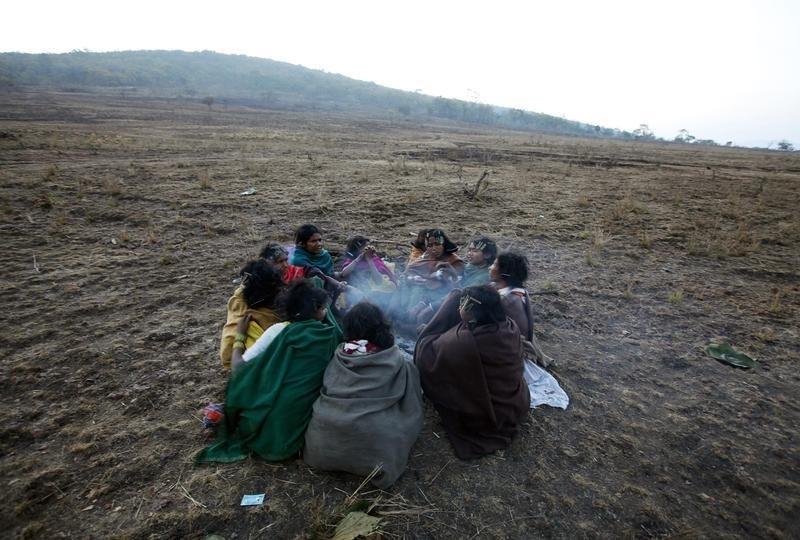Last week, The Quint reported that an Adivasi child in Ratlam district in northwest Madhya Pradesh had been hospitalised after drinking insecticide in order to quell a desperate hunger. The child had reportedly asked for grains from the local ration shop several times, but had been turned away. Little else is known or has been reported about the incident, which took place on December 31 and is being investigated by the National Commission for Protection of Child Rights.
One thing, however, should be very clear – this is not an isolated incident. On the contrary, it is symptomatic of a systematic pattern, which tells us loudly and clearly, that in India today, Adivasi lives don’t matter.
Hunger and malnutrition is widespread in rural Madhya Pradesh. Indeed, child mortality rates in the state rank among the highest in the world, and levels of malnutrition among children surpass the levels found in most countries in Sub-Saharan Africa. This takes a particularly harsh toll on the state’s Adivasi population.
Also read: Dalits, Adivasis Most Likely to Face Coercion to Stop Open Defecation, Study Finds
Whereas the average infant mortality rate (IMR) in the state stood at 51 per 1,000 in 2015-16, the IMR for Scheduled Tribes areas was 59 per 1,000. The under-five mortality rate (U5MR) shows similar discrepancies – in 2015-16, it was estimated at 64 per 1,000 for the state, but 78 per 1,000 for Scheduled Tribes. This pattern in turn dovetails with national trends – in 2015-16, India’s overall U5MR stood stood at 49 per 1,000, but for Scheduled Tribes it was 57 per 1,000.
Disproportionate levels of malnutrition and disproportionate levels of child mortality are indexes of disproportionate poverty. At the national level, it has been estimated that 44.7% of India’s Adivasi population lives below the poverty line, and while constituting only 8% of India’s total population, they make up as much as 25% of the poorest decile of this population. Conversely, altogether 30% of India’s Adivasis are located in the poorest decile of the country’s population.
Very often, when Adivasis make it to the headlines, whether nationally in India or internationally, it is in the context of large-scale dispossession – for example as a result of mining projects or dam building. There are of course good reasons for this, as Adivasis constitute at least 40% of the 20 to 30 million people who have been displaced by mega-projects since independence in 1947. And as we know all too well, the lack of adequate resettlement and rehabilitation means that displacement entails impoverishment, as Adivasis have turned in large numbers to migration and precarious work in cities in order to eke out a living.
However, perhaps the conversation and the focus needs to shift, away from sensational dispossession and towards mundane dispossession – that is, the kind of dispossession that is so clearly evident in the systematic sociodemographic patterns of disadvantage that lead Adivasi children to drink insecticide to subdue the pangs of hunger. And perhaps, in extension of this, we also need to reflect on what these patterns actually tell us about India and India’s development.
Also read: Even After 18 ‘Starvation’ Deaths, Jharkhand Govt Sidesteps All Blame
The American scholar-activist Ruthie Wilson Gilmore has defined racism as the production and exploitation of group-differentiated vulnerability to premature death. The reference point for this definition is the US scenario in which African-Americans are disproportionately exposed to poverty, unemployment, imprisonment and murder at the hands of the police relative to white Americans.
Whereas the contexts and underlying dynamics are different, Gilmore’s proposition is nevertheless pertinent to understanding the situation for Adivasis today, for the disproportionate levels of poverty that they suffer are of course nothing if not a case of group-differentiated vulnerability to premature death. And, crucially, it is a group-differentiated vulnerability to premature death that is produced by the economic policies that have propelled India to the status of a middle-income country and the fastest-growing major economy in the world.
Racism isn’t the right word for the particular kind of group-differentiated vulnerability to premature death that India’s Adivasis are subject to, but it is equally repugnant and equally lethal. And the fact that Adivasi lives don’t matter, despite how they feed the fires of accumulation that the country’s elites pride themselves on with both their land and their labour, is an insight and an indictment that has to be acknowledged, with all its implications, especially by those who want to see an India in which there is justice and fullness of life for all.
Alf Gunvald Nilsen is Professor of Sociology at the University of Pretoria.
